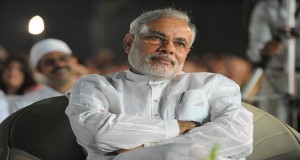
Chandigarh, The great Indian transformation phenomenon triggered with the Lok Sabha election which catapulted a regional leader like Narendra Modi to the highest executive office in the country countries continues. Going by the results of the Maharashtra and Haryana Assembly elections, the people are determined to dump the traditional politics and traditional politicians. The generational change started with the BJP.
Not that it is for the first that that the Congress has landed itself in such a deep morass from where its retrieval seems to be an impossibility. There is a qualitative change in the situation that the Congress was replaced by a single party majority at the centre for the first time. The Indian political discourse continues to be dictated by that trend. The reinforcement of that trend is more of a lesson for the new rulers as the Congress stand virtually decimated from the geographical map of India.
The people of in the biggest democracy in the world are becoming more and more unsparing. They are in no mood to tolerate the corrupt and the arrogant and non-governance. This is where the challenge to the BJP begins. Is the BJP capable of insulating itself from the virus that hit the Congress?
The expectations from the BJP are too high. Modi is being seen virtually as the proverbial deliverer. The BJP campaign in the two states was also Modi centric. Both these states were ruled by the Congress. Both these states remained in the headlines for all the wrong reasons. The main issues were corruption and mismanagement. Perhaps for the first time, especially in Haryana, a member of the Sonia Gandhi family was in the eye of the storm. Her son-in-law Robert Vadra was at the centre of the controversy regarding his land deals with the Bhupinder Singh Hooda government coming under attack for extending Vadra turned realtor undue favours. Moreover, Hooda functioned as if he was the chief minister of Rohtak area only and not of the entire state.
This alone would not explain this quantum jump in the number of seats with the BJP from four in the last election to more than 44. The people have also rejected the regional-centric politics with which the Indian National Lok Dal is associated with. Moreover, this party is dominated by a single family like the Akali Dal now in Punjab whose style of functioning has not been to the liking of the people.
The Congress-NCP alliance government in Maharashtra also became a symbol of corruption with Adarsh Society housing scam hitting the headlines. The government just could not get out of it. In Maharashtra also, the trend is away from the regional parties. BJP has emerged as the biggest party. Interestingly, it is the NCP which has taken the lead in shifting its stand with the announcement to extend unconditional outside support to the BJP. Before the elections, Maharashtra had two main alliances- one being the Congress-NCP alliance as the ruling combination and the BJP-Shiv Sena combine as the main opposition. Both the alliances ended before the elections and all four went to the people at their own.
The Haryana scene was interesting at yet another level. Hooda went out of the way to win sympathy of the 12 lakh Sikh voters with the creation of the Haryana Sikh Gurdwara Parbandhak Committee which was strongly opposed by the Akali Dal, INLD and the BJP. The Akali Dal, in alliance with the BJP in Punjab and the centre, supported INLD and contested two seats. The party succeeded in winning one seat. This behaviour of the Akali Dal has not been digested by the BJP at the national level as evident from the hardening attitude of the Modi government towards the Parkash Singh Badal government. The Akali Dal had been hoping that in case the Congress lost the elections, the succeeding government would repeal the Haryana Sikh Gurdwara Act, 2014. With the Akali Dal having supported the INLD, would the BJP go ahead with it? It is unlikely. The BJP can even go to the extent of extending outside support to the Badal government. This is the main worry of the Akali Dal which has now become synonymous with the Badal family.
The Congress has been pushed out to the margins, literally, so far as the geography of the country is concerned. The Congress is in power in Himachal Pradesh and Uttrakhand in the northern region and then Kerala in the deep South, besides the north-eastern states. Going by the state of affairs at present, the party would have to re-invent itself in case it has to survive.
The traditional concepts of secularism and communalism are also changing going by the continuing voting behaviour of the people. Democracy is the governance by majority. The present trend is towards majoritarianism. This is to be seen as to how the minorities adjust to the changing trend. Majoritarianism is different from governance by the majority.




 Driving Naari Programme launched in Chandigarh
Driving Naari Programme launched in Chandigarh






























